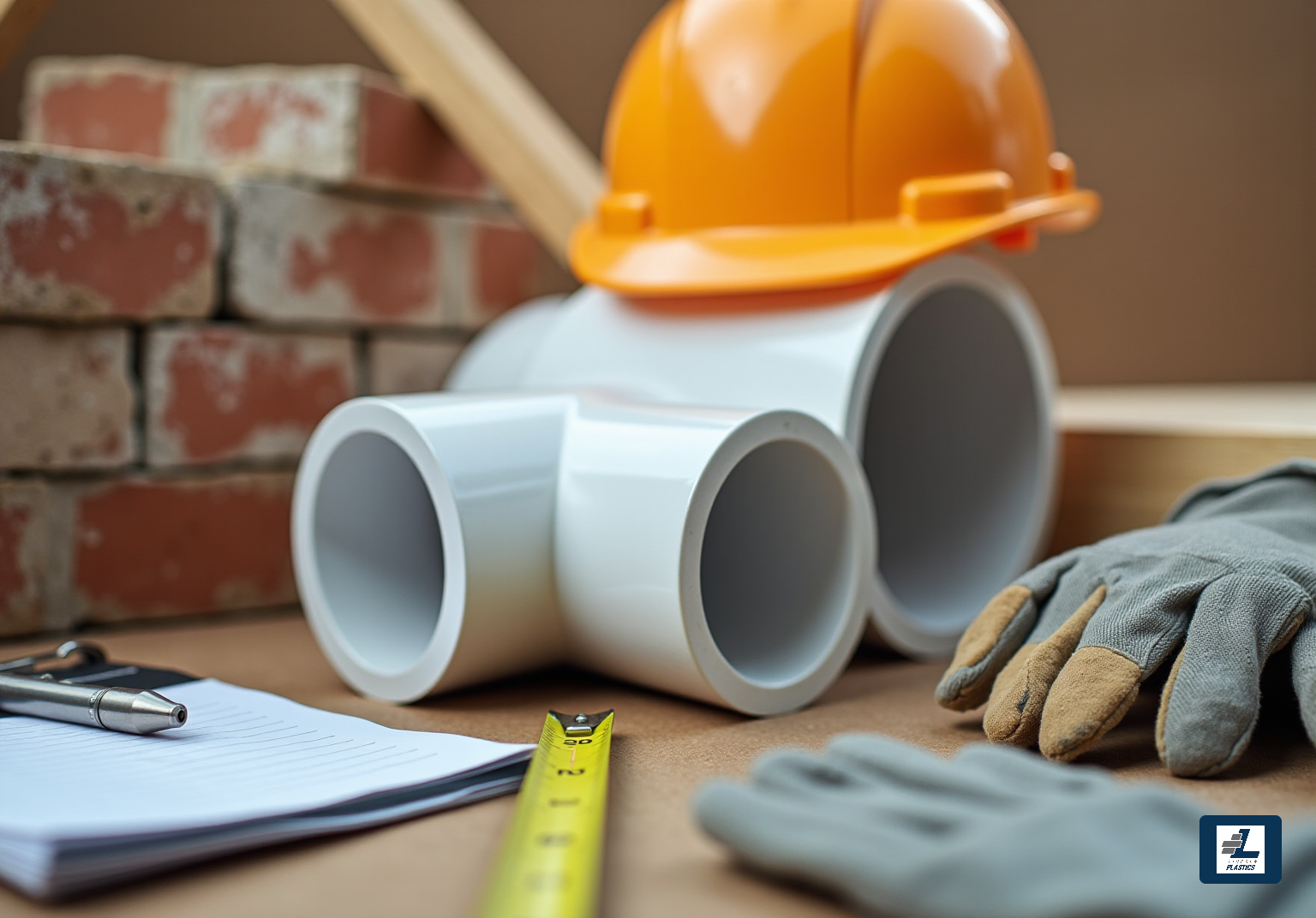
Understanding PVC Properties: Key Characteristics for OEMs
Overview
Let’s dive into the world of PVC! This article shines a light on the key characteristics that Original Equipment Manufacturers (OEMs) need to know. We’ll explore its composition, the different types available, and its mechanical and thermal properties. Plus, we’ll look at how PVC is used across various industries and its environmental impact.
You might be wondering why PVC is such a big deal. Well, its durability, versatility, and recyclability make it a go-to material in construction, healthcare, and consumer products. But it’s not just about the benefits; we also need to think about its environmental footprint when making sourcing decisions.
So, as we go through this, keep in mind how these factors play a role in your choices. Ready to learn more about PVC and how it can work for you? Let’s get started!
Introduction
Understanding the properties of Polyvinyl Chloride (PVC) is key for original equipment manufacturers (OEMs) who are navigating the tricky waters of material selection. With its unique composition and remarkable versatility, PVC really shines as a go-to choice in various industries, from construction to healthcare. But here's the kicker: as the demand for sustainable materials grows, how can manufacturers tap into the benefits of PVC while also tackling environmental concerns? In this article, we’ll dive into the key characteristics of PVC, looking at its mechanical and thermal properties, its diverse applications, and what its lifecycle means for sustainability. So, let’s get started!
Define PVC: Composition and Structure
Have you ever wondered about the materials that make up the world around us? Let’s dive into Polyvinyl Chloride, or PVC for short. This synthetic polymer is created from the polymerization of vinyl chloride monomers, and believe it or not, it’s one of the most widely produced synthetic plastic materials out there. It's composed of carbon, hydrogen, and chlorine atoms, which endow it with distinct PVC properties.
Now, PVC comes in two main types:
- Rigid PVC is what you’ll often find in construction applications, like pipes and window frames.
- Adaptable PVC is used in products such as electrical cable insulation and flooring.
At Lincoln Plastics, we’re all about versatility—we produce both standard and custom round synthetic profiles in a variety of colors, diameters, and lengths. Need something specific? We even offer adaptable profiles designed to meet your exact requirements.
Speaking of customization, our ability to co-extrude different colors into profiles, like adding a 'yellow stripe', really shows our commitment to flexible manufacturing solutions. Isn’t that cool? Plus, the versatility of PVC properties is improved by various additives that optimize its performance for specific applications. This means you can count on us for reliable rigid plastic extrusion solutions, complete with on-time delivery and quality assurance. So, what do you think? Ready to explore what PVC can do for you?
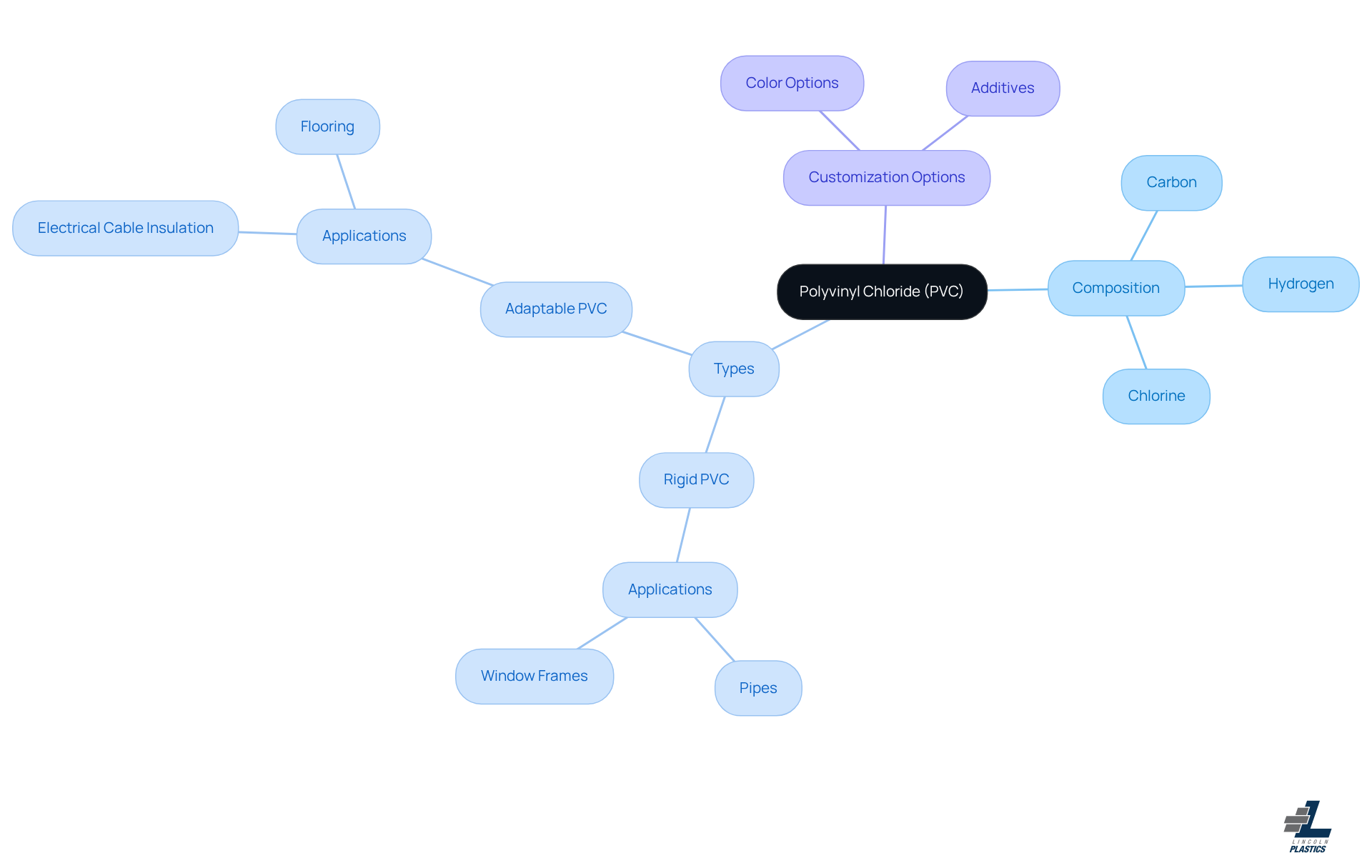
Explore Key Properties of PVC: Mechanical and Thermal Performance
Have you ever wondered why PVC is such a popular choice in so many applications? Well, it has some pretty impressive PVC properties that make it stand out. For starters, it boasts high tensile strength, durability, and impact resistance. This means it’s perfect for construction materials and piping systems—talk about reliable!
Now, let’s talk about temperature. PVC has a glass transition temperature of around 80°C, which helps it keep its shape and integrity even when things heat up or cool down. Plus, it's resistant to many chemicals, oils, and greases, making it super useful in industrial settings.
And here’s something cool: you can enhance PVC's UV resistance with additives, which opens the door for outdoor applications. All these features together really enhance the reputation of PVC properties as a dependable material across various sectors. So, next time you see PVC in action, you’ll know just why it’s such a go-to choice!
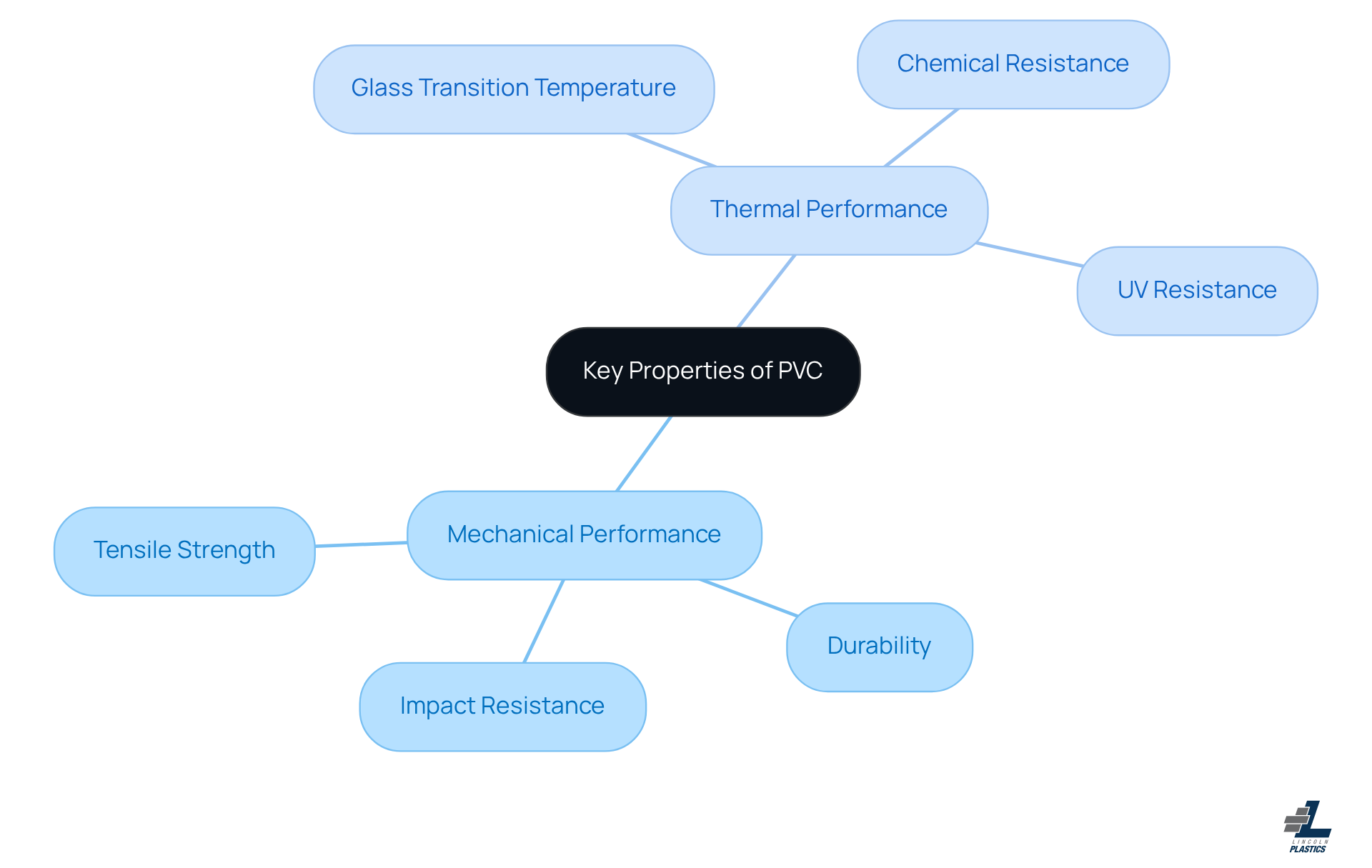
Examine Applications of PVC: Versatility Across Industries
Did you know that PVC is super versatile? It’s used in all sorts of industries! In construction, for example, you’ll find it in pipes, siding, and window frames. Why? Because of its PVC properties, it is durable and can handle the weather like a champ. Now, if we shift gears to healthcare, the PVC properties play a critical role here too. It's found in medical tubing, blood bags, and IV containers—thanks to its biocompatibility and ease of sterilization.
But wait, there's more! PVC is also popular in consumer products like toys, flooring, and packaging. At Lincoln Plastics, we’re all about partnering with OEMs to ensure our products possess excellent PVC properties that meet top-notch quality standards. We even have special checks for ‘fit and function’—how cool is that?
Our quality system is robust, featuring dedicated documentation for each plastic profile to ensure all critical dimensions are spot on. Plus, the ability to produce PVC in various colors and finishes makes it even more appealing for manufacturers looking for aesthetic options. So, if you’re an OEM seeking reliable materials for your products, PVC might just be the perfect choice for you!
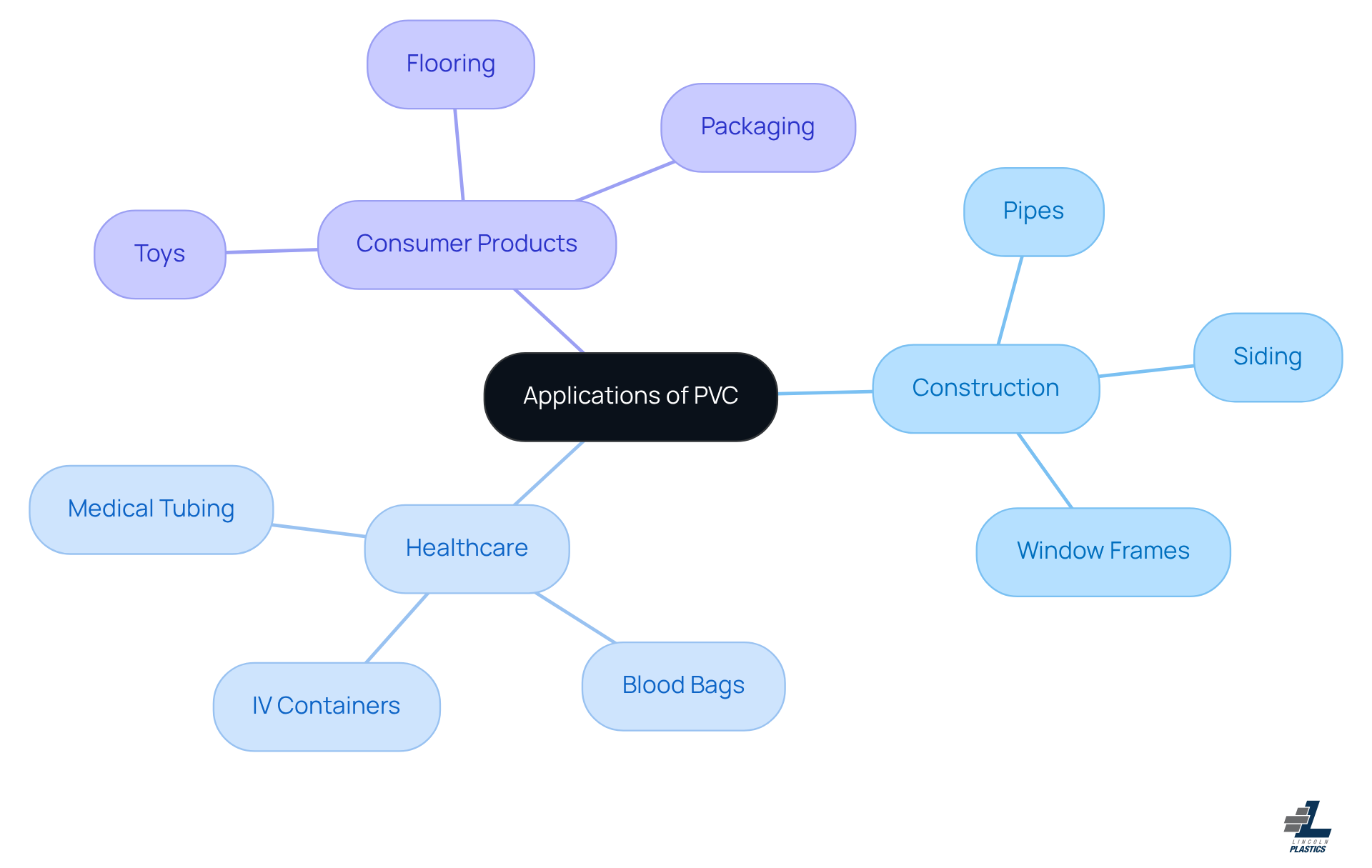
Assess Environmental Impact and Recycling of PVC
You know, the environmental impact of PVC has been a hot topic lately. People are really concerned about how it’s made and what happens to it when it’s thrown away. On one hand, the PVC properties make it super durable and long-lasting, which can actually help reduce waste over time. But here’s the catch: its production uses chlorine and fossil fuels, which raises some eyebrows.
Now, you might be wondering, what about recycling? Good news! PVC is recyclable, and there are plenty of facilities ready to process it into new products. This recycling process can really help cut down the environmental footprint associated with the properties of PVC. Plus, with technology advancing, we’re seeing the development of more sustainable PVC options, including those made from bio-based materials.
So, if you’re an OEM, it’s a good idea to think about the entire lifecycle of PVC properties when making sourcing decisions. It’s all about finding that sweet spot between performance and being environmentally responsible. Let’s keep the conversation going on how we can all make better choices!
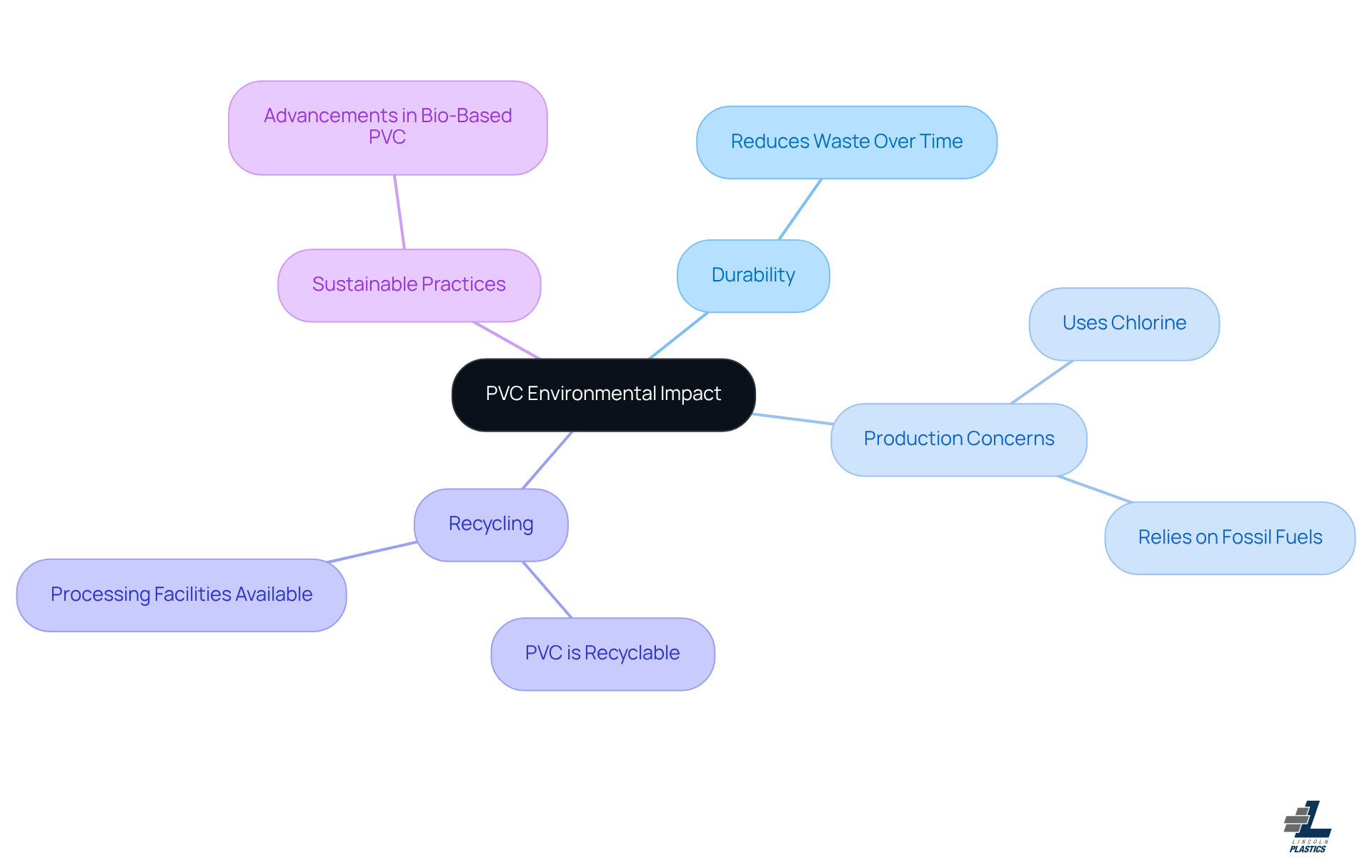
Conclusion
PVC, or Polyvinyl Chloride, is quite the versatile synthetic polymer, isn’t it? It plays a crucial role in so many industries, all thanks to its unique properties. With a composition of carbon, hydrogen, and chlorine, PVC comes in two main forms—rigid and flexible—each tailored for specific uses. Its impressive mechanical strength, thermal stability, and chemical resistance make it a go-to choice for construction, healthcare, and consumer products.
Now, let’s dive into some key characteristics of PVC. We’ve highlighted its durability, impact resistance, and ability to adapt to various conditions. Plus, the fact that it can be recycled and that there are ongoing advancements in sustainable PVC options shows how much we’re becoming aware of environmental concerns. It’s important to think not just about how PVC performs but also about its lifecycle and environmental impact when we’re sourcing materials.
So, what does this mean for OEMs and manufacturers? Understanding the properties and applications of PVC is essential. As industries evolve, embracing sustainable practices while harnessing the strengths of PVC can lead to innovative solutions that satisfy both performance needs and environmental responsibilities. Engaging in conversations about PVC’s role in sustainable manufacturing can really pave the way for a more responsible future in material selection. What do you think about that?
Frequently Asked Questions
What is PVC and how is it made?
PVC, or Polyvinyl Chloride, is a synthetic polymer created from the polymerization of vinyl chloride monomers. It is one of the most widely produced synthetic plastic materials.
What are the main components of PVC?
PVC is composed of carbon, hydrogen, and chlorine atoms, which give it distinct properties.
What are the two main types of PVC?
The two main types of PVC are rigid PVC, commonly used in construction applications like pipes and window frames, and adaptable PVC, used in products such as electrical cable insulation and flooring.
What customization options does Lincoln Plastics offer for PVC products?
Lincoln Plastics offers standard and custom round synthetic profiles in various colors, diameters, and lengths. They also provide adaptable profiles designed to meet specific requirements.
How does Lincoln Plastics enhance the versatility of PVC?
Lincoln Plastics enhances the versatility of PVC by using various additives that optimize its performance for specific applications, and they can co-extrude different colors into profiles, such as adding a 'yellow stripe'.
What guarantees does Lincoln Plastics provide for their PVC products?
Lincoln Plastics guarantees reliable rigid plastic extrusion solutions, on-time delivery, and quality assurance for their PVC products.


